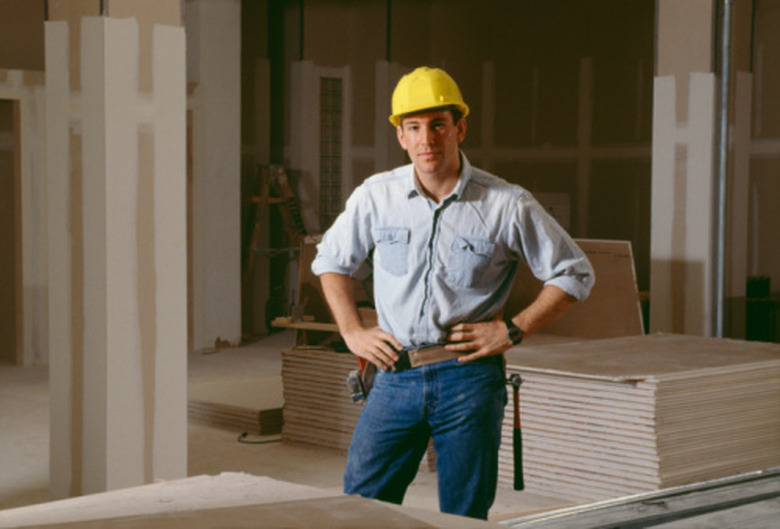Does The Brown Side Of Drywall Face Out?
The drywall surface designed to face outward is consistent and even, so you'll achieve the best results if you install drywall according to the manufacturer's specifications. If you're not sure how to install the drywall type you purchased, contact the manufacturer for instructions. Typically, the backside of drywall is brown.
Function
Function
The brown side of drywall should not face out. The other side — which can be gray, green or blue, depending on type — should face outward. Failure to orient the drywall correctly will lead to surfaces that look rough and unfinished even when painted. While applying several coats of primer and paint might minimize the effect of the brown paper, you will notice roughness when you shine a bright light across the surface.
Significance
Significance
Note that certain types of drywall have specially treated paper to accomplish specific purposes. For example, greenboard is a type of drywall that builders use in humid areas. Its paper has a special chemical treatment that helps it repel water. Typical uses include bathrooms, laundry rooms and humid basements. If you install this or other special types of drywall backward, the paper cannot have its intended effect because it is not facing the room.
Considerations
Considerations
If you don't mind a rough appearance, you can install drywall backward. For example, if you're installing the drywall in an unobtrusive place, such as the inside of a closet, the final result might not be important.
Expert Insight
Expert Insight
If you must install drywall backward, you can minimize the negative affect of the brown paper by applying several thin coats of joint compound across the entire surface. For each coat, wipe it off immediately after applying it. A 12-inch drywall knife is effective if you must coat a large area. Smooth the drywall for paint by sanding it with 150-grit sandpaper.
